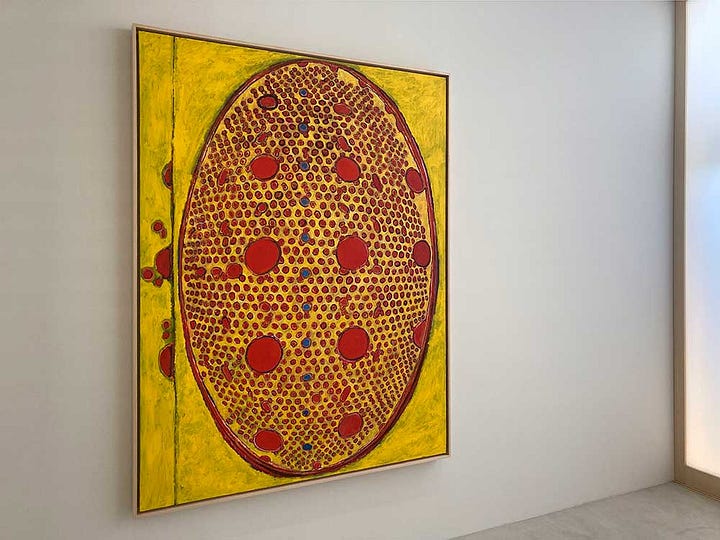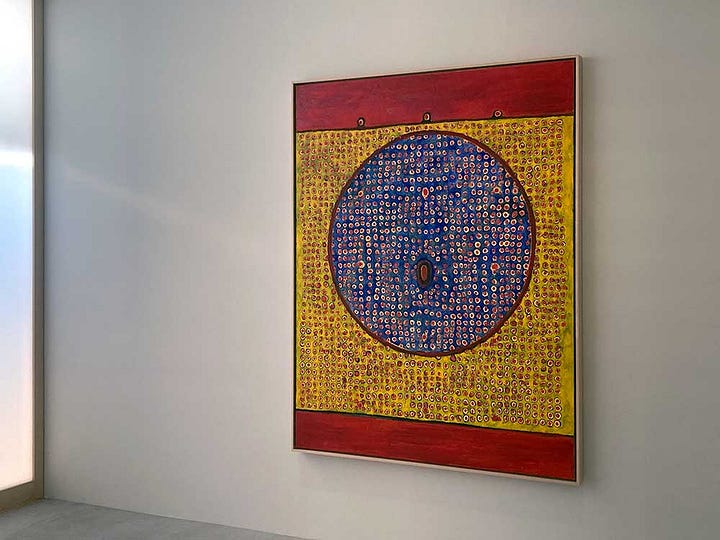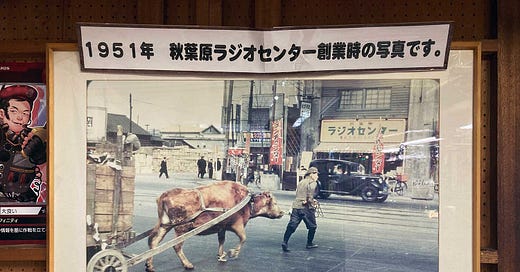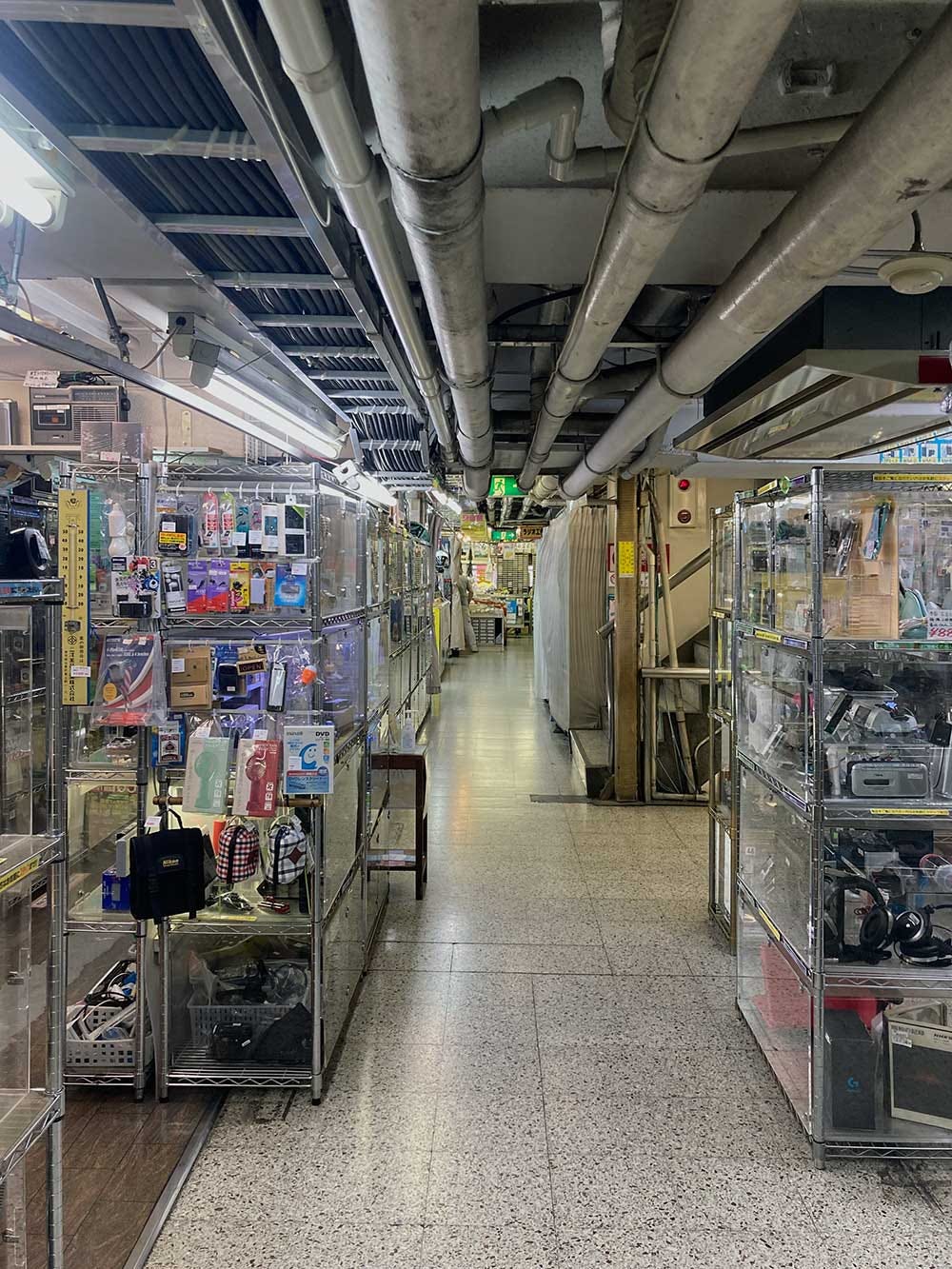05/19, Arts Culture Tourism from Tokyo
Electric Town, "Tokyo Ephemera" at Intermediatheque, "Terry Winters: IMAGESPACE" at Fergus McCaffrey, and Kabukicho
Welcome to NOTEBOOK, a cultural guide to art, design and architecture, along with a resource of local news and information in English giving a realistic view of Tokyo and further afield.
05/19 – Japan's National Tourism Organization JNTO has confirmed the number of foreign visitors bounced back April to 67 percent of same month in 2019, with a little help from this year’s cherry blossom. Former volleyball player Tadayoshi Yokota who won gold at the 1972 Munich Olympics passed away earlier this month. In Hiroshima, security has ramped up in readiness of today’s G7 summit following several high profile attacks on current and former Japanese Prime Ministers.
And from Electric Town in Akihabara we drop by the Intermediatheque museum near Tokyo Station to see their current exhibition, Tokyo Ephemera, before heading towards Aoyama to see Terry Winters: IMAGESPACE an exhibition by the American painter at Fergus McCaffrey. We end our trip across town at the edge of Kabukicho, another Electric Town but one, a short walk from Shinjuku Station.
From the Electric Town of Akihabara we head to Tokyo Station making a brief stopping at the Intermediatheque museum opposite. Their current exhibition, titled Tokyo Ephemera, is described as an attempt to capture the visual identity of postwar Tokyo. There is everything from city plans by the architect Kenzo Tange whose laboratory developed Plan for Tokyo 1960 proposing a city-wide for structural reform synonymous with Metabolism, an architectural movement founded in Japan between the late 50s and early 60s. There are also advertisements and posters for the department store Parco, photo books, tourist guides in the shape as every copy of Shinjuku PlayMap, and other maps marked with every event and “happening” by the Japanese artistic collective Hi-Red Center.
Across town, an exhibition by the American painter Terry Winters at Fergus McCaffrey titled IMAGESPACE contains paintings that reference modern science, engineering, even mathematics.
While Winter’s paintings echo what the American painter David Salle describes as “a quality shared with graphic ancestors,” like Piet Mondrian and Jackson Pollock, a more interesting argument would be that they share the context of Tokyo, “a city of graphic spillover” where real and imaginary images collide. As seen in Intermediatheque, the photorealism of Provoke era photography and the utopian aspirations of the Metabolists are different responses to an exploding global population and the scientific discoveries of the day, with imagery of “imaginary edifices” and “real sites” transformed. 1


In the age of personalised entertainment, Electric town (Denki-Gai) charged with an atmosphere of pleasure measured in volts and amps, sound and sensation, electronic stores, maid cafes and spaces for acting out small obsessions, has forged a unique identity. Buried deep within the cabled ceiling of the old Radio Center on the half-landing between floors, a small shrine sits off to one side with a spiritual space not entirely been given over by idol culture and the odour of trapped adolescence. And in Shinjuku, outside distractions are kept at bay by the narrow confines of Omoide Yokocho (Memory lane) a crawl space filled with bars, packed with regular customers and curious tourists looking lost.
NOTEBOOK episodes are published 3 times a week: Monday, Wednesday, and Friday. We will add things here we couldn’t fit into each episode and use this space as somewhere to answer your questions when your here or thinking of visiting Japan.
It wont necessarily be chronological: we’ll dive back into previous episodes and expand on things that wouldn’t fit — you can only record so much.
We have recently been adding field recordings from different parts of the city, and different parts of the country, while interviews give us a chance to talk with other people on the places they might recommend (or not, for that matter).
And if you have an recommendations or requests, send an email (notebook.podcast@gmail.com) or voice message (speakpipe.com/notebook). Better still, Subscribe and add a comment below. Thanks for listening, thanks for reading, and feel free to use this as your NOTEBOOK.
Michio Hayashi, “Tracing the Graphic in Postwar Japanese Art” in Tokyo 1955-1970: A New Avant-Garde, Museum of Modern Art, New York, November 2012 : 97







